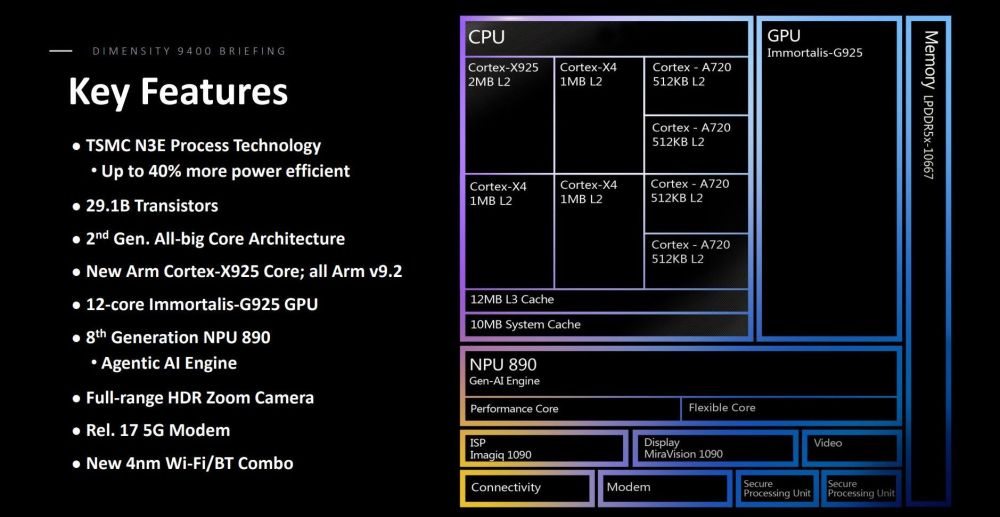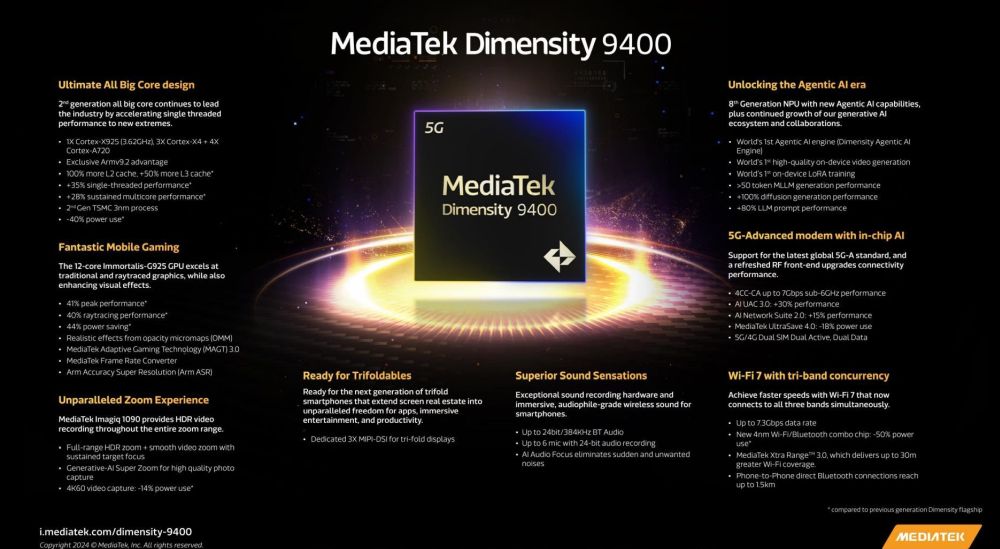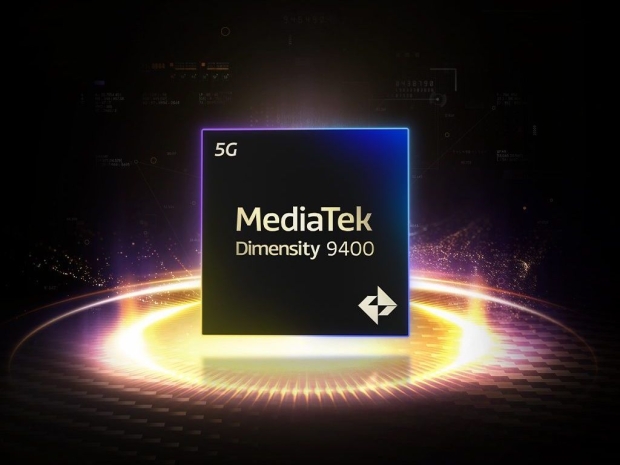The outfit claims it will offer improved efficiency and power, with an elevated focus on generative AI.
For those who came in late last year, MediaTek transitioned to an “all big core” architecture, opting to build the Dimensity 9300 with four “ultra-large” cores and four big cores. This abandoned the smaller cores typically seen in System-on-Chip (SoC) designs. This proved successful, and the company plans to expand on the idea.
Dimensity 9400 comprises 1 Cortex-X925, 3 Cortex-X4, and 4 Cortex-A720 cores. The all-Cortex composition is encapsulated within a chipset built on a 3nm process, an upgrade from the previous 4nm 9300. The X925 assumes a central role, supported by three additional X4 cores, with the A720 blocks aligning alongside them. This configuration differs from the preceding chipset, where the A720 is the least potent core, unlike the A520 cores featured in the Dimensity 9300.

MediaTek reports that the Dimensity 9400 is 40 per cent more power efficient than its predecessor, the 9300, which signifies a notable leap in performance between these two distinct SoC designs, even with the inclusion of more powerful components. Furthermore, the chipset delivers a 35 per cent improvement in single-thread performance and a twenty-eight per cent enhancement in multi-thread performance. The introduction of LPDDR5X memory contributes to a ten per cent boost in performance, supporting data rates of 10.7GB/s.
The chipset also includes the Immortalis-G925 GPU and MediaTek’s eighth iteration NPU. According to MediaTek, the GPU delivers 41 per cent faster peak performance and forty per cent speedier raytracing performance. The GPU's efficiency has increased, resulting in significant power savings. This performance boost translates to slightly higher frames per second in certain games.
Expectations are high for the eighth-generation NPU and its capability to manage evolving AI processing demands. MediaTek recently announced that this chipset would support Google’s Gemini Nano, marking a significant advancement towards robust AI generation on Android. While expanded support might be available for other Dimensity 9000-series chipsets, the 9400 is likely to be the most capable.
Additionally, MediaTek introduces its new AI Agentic Engine, an AI framework designed to streamline the deployment of proprietary AI engines by OEMs. This framework is powered by an NPU that is 35 per cent more power efficient and up to 80 per cent faster in LLM prompt performance. The NPU also facilitates on-device LoRA training and high-resolution video generation, representing a substantial leap for the manufacturer. It remains to be seen if OEMs can effectively utilise these capabilities and if they will translate into noticeable user-side improvements.
Dimensity 9400 supports 8K 60fps 10-bit video with full-range HDR zoom on compatible devices. OEMs may also incorporate generative AI capabilities with the Dimensity 9400. The chipset can power a WQHD+ display at up to 180Hz. MediaTek has also added MIPI support for tri-fold displays, which could be particularly beneficial for foldable devices as this category gains momentum.
Furthermore, the chipset features a new 5G modem offering up to 7GB/s performance alongside a new 4nm Wi-Fi/Bluetooth combo chip that boasts lower power consumption compared to its predecessor.
MediaTek anticipates releasing the first smartphone powered by the Dimensity 9400 in the fourth quarter of this year.





